Author: Duncan Horan-Lunney, student biologist
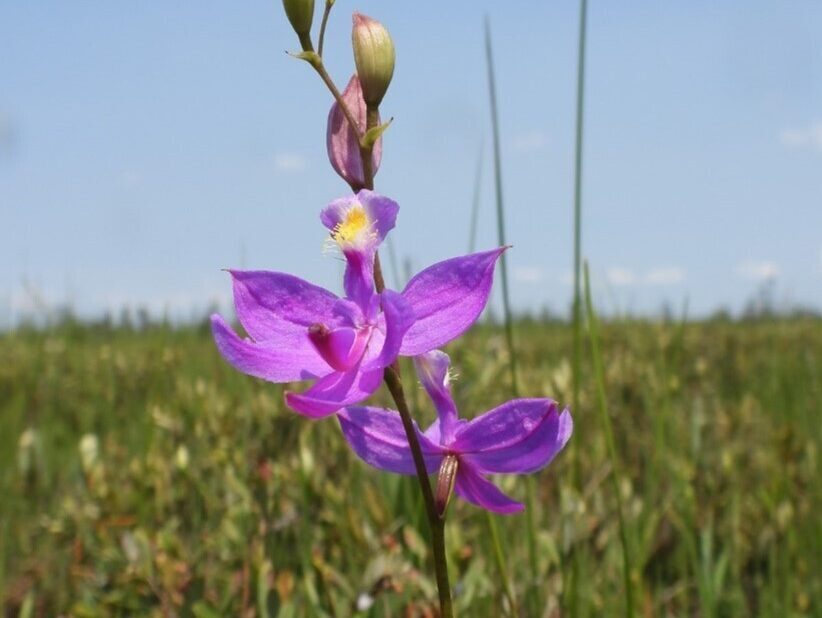
Did you know that 45 species of orchids have been found within a 50-km radius of the Parliament buildings? There is a surprising diversity of breathtaking flowers that often goes unnoticed.
In this blog, I dive into common orchid species, as well as some of the more elusive orchids, that call the National Capital Region home.
The history of orchids in Ottawa
The impressive diversity of orchids can be partly explained by the Ottawa Valley’s unique geology. Ottawa sits on the boundary of two distinct physiographical regions.
- To the north is the Canadian Shield, the eroded remnant of one of the oldest mountain ranges on earth and home to many species of boreal orchids.
- To the south lies the St. Lawrence Lowlands, carved and compressed by a 2-km thick ice sheet that, luckily for us, melted about 14,000 years ago. This region is comprised primarily of deciduous forests with many wetlands and bogs in which orchids grow.
The overlap between these ecoregions means we have the diversity of two distinct ecosystems in one place!
Here’s a good example of this intersection: The boreal orchid fairy slipper (Calypso bulbosa) can be found in the southern range of Ottawa, and the elegant species called showy orchid (Galearis spectabilis) can be found at its northern range limit in Ottawa. These species would rarely be found anywhere near each other. Yet, you can find both within the National Capital Region.
Common orchids you can find in Ottawa
As a student biologist working for the National Capital Commission, I have been able to explore Ottawa’s forests and bogs looking for orchid species.
These species may not be as common as other plants, but relative to Ottawa’s orchids, these species are the most likely to be spotted on your adventures.
Here are the orchids you are most likely to find in Ottawa:
Pink lady’s slipper (Cypripedium acaule)
- Blooming period: Late May to early July
- Plant height: 10–59 cm
These showy flowers are one of the most common and recognizable orchids in the Ottawa area. They can be found in acidic and partly shaded environments, both wet and dry. These orchids can form colonies as large as 1,500 flowers but are typically found in groups closer to 250.
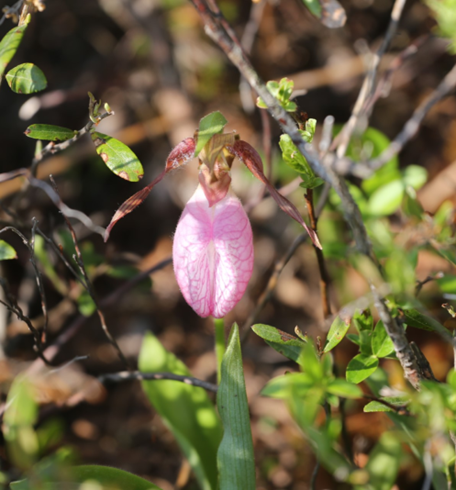
Yellow lady’s slipper (Cypripedium parviflorum)
- Blooming period: Early May to early July
- Plant height: 12–57 cm
This abundant relative of the pink lady’s slipper has gorgeous yellow petals that certainly stand out in a forest. Yellow lady’s slippers can be found in less acidic soils than the pink lady’s slipper. They often inhabit forests bordering fens and bogs. This orchid also prefers partial shade. It can be found in large colonies of up to 700 flowers but is typically found in groups of 20 to 120.
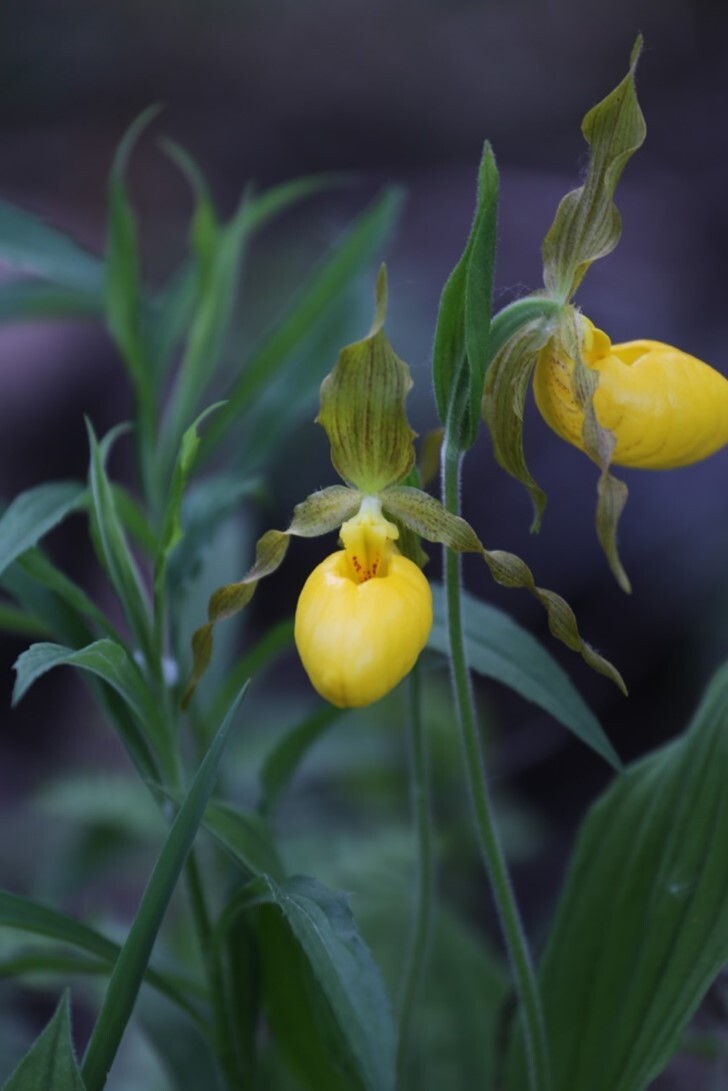
Rose pogonia (Pogonia ophioglossoides)
- Blooming period: Early June to mid-August
- Plant height: 18–62 cm
The rose pogonia is pollinated by bees and is hard to miss when in full bloom. This species grows in open, wet habitats such as fens and bogs. They certainly appreciate moisture-rich areas.
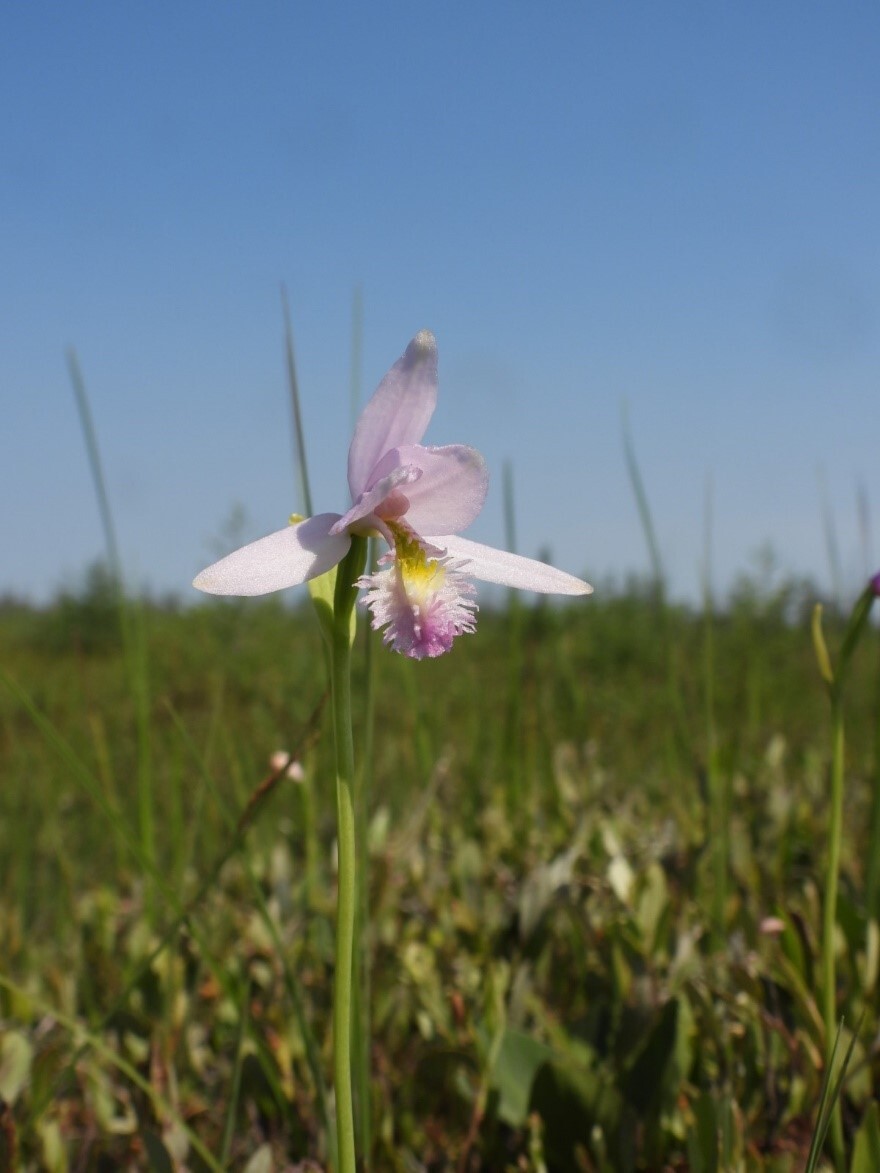
Grass pink (Calopogon tuberosus)
- Blooming period: Mid-June to early August
- Plant height: 18–64 cm
Primarily found in fens and bogs, this orchid is “good friends” with the rose pogonia. Like most good friends, they are often found together. In fact, these pictures I took of the grass pink and rose pogonia were within 5 m of each other in the Mer Bleue Bog! This orchid is primarily pollinated by bumblebees and other large, long-tongued bees.
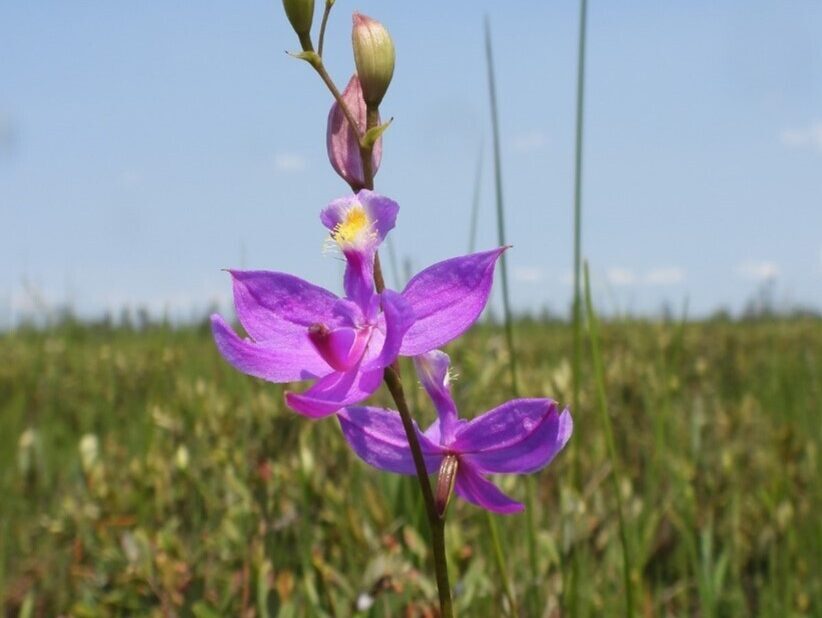
Rare orchids you can find in Ottawa
These orchids are very rare in the Ottawa area. To see one would be a true gift from Mother Nature! Some of these orchid species have only been observed a handful of times in the Ottawa Valley, even though they are native here. You just have to be patient and know where to look!
Here are three rare orchids that call Ottawa home:
Dragon’s mouth (Arethusa bulbosa)
- Blooming period: Late May to early July
- Plant height: 13–24 cm
The dragon’s mouth is one of the rarer orchids in the National Capital Region and is arguably one of the most beautiful. This orchid is the only species of the Arethusa genus in North America, making the species represent an isolated and fabulous branch of orchid taxonomy.
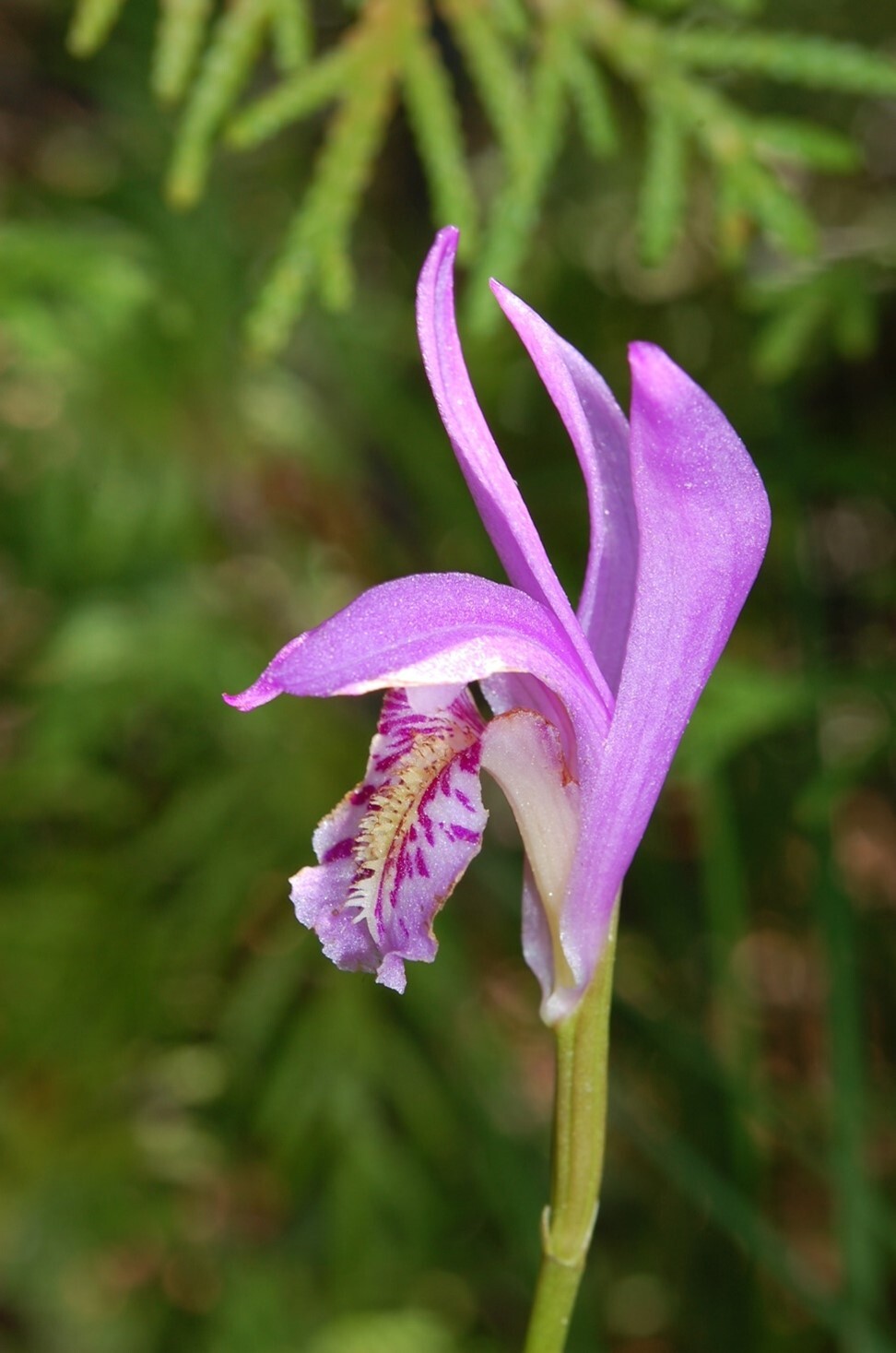
Showy Orchid (Galearis spectabilis)
- Blooming period: Mid-May to mid-June
- Plant height: 9–21 cm
The showy orchid is one of the first orchids to bloom in spring. It can be found in the northern range limit in Ottawa, in half- to fully shaded areas. These species are rarely found in full sun and prefer wetter, shady environments and can bloom up to 12 flowers on a single plant!
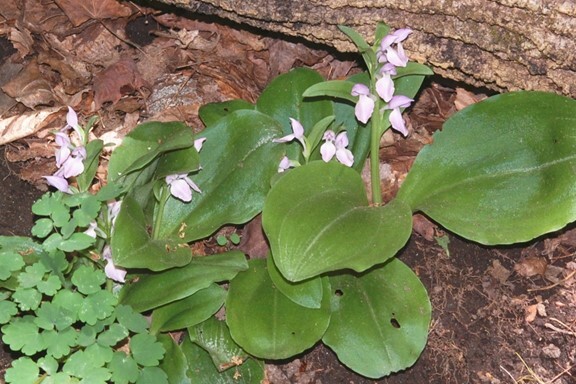
Ragged fringed orchid (Platanthera lacera)
- Bloom: Late June to early August
- Plant height: 11–73 cm
This orchid is extremely rare in the Ottawa area. The ragged fringed orchid grows multiple small, delicate, branching white-fringed flowers. These flowers are small and ambiguous from a distance, which may cause the flower to be overlooked. But under closer inspection, these orchids are unique flowers that attract moths for their pollination.
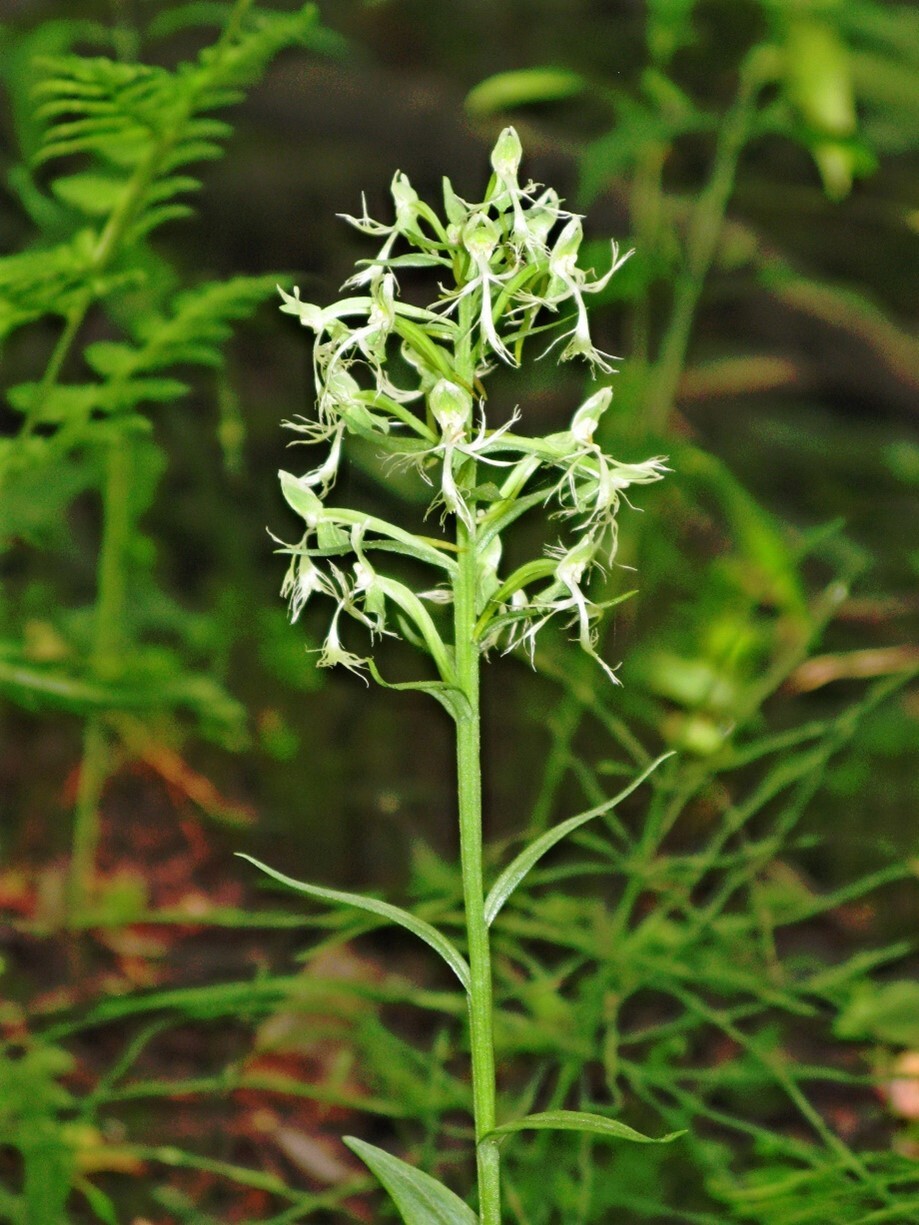
Showing respect to orchids
Many of the orchids in this blog are found in fragile and unique ecosystems like the Mer Bleue Bog. On your adventures, it’s important to never walk into the bog or off the boardwalk. Every step you take off the trail could damage the plant and animal life under your feet.
For those with a keen eye, there are plenty of orchids to be seen from Greenbelt boardwalks. The ridges surrounding Mer Bleue Bog, with marked trails, are also a great space to find these orchids. Trails starting at Greenbelt parking lots P20, P21, P22 and P23 are your best bet for spotting some of the bog-inhabiting orchids.
We are responsible for maintaining these spaces and species for generations to come, so please NEVER pick or harvest orchids from the natural world.
Allan and Joyce Reddoch: Conservators of Ottawa’s orchids
In the Ottawa area, Allan and Joyce Reddoch spent 55 years studying and exploring Ottawa’s native orchid diversity. Their work is the largest collection of long-term orchid studies in Canada and has made Ottawa’s orchid diversity incredibly well-documented and accessible.
Allan Reddoch passed away in the fall of 2023 at the age of 92. He will be dearly missed by his family, friends and the greater Ottawa and naturalist communities. We should consider ourselves lucky to live in a region that was home to such passionate naturalists. As a young biologist, I was deeply inspired by Allan and Joyce’s work, and you should be too. These species and the spaces they inhabit are spectacles of nature.
Allen and Joyce have set the bar incredibly high, and I hope this blog instills a feeling of admiration and obligation to the magnificent flowers that call our nation’s capital their home.